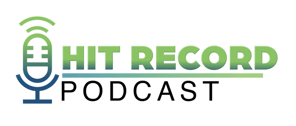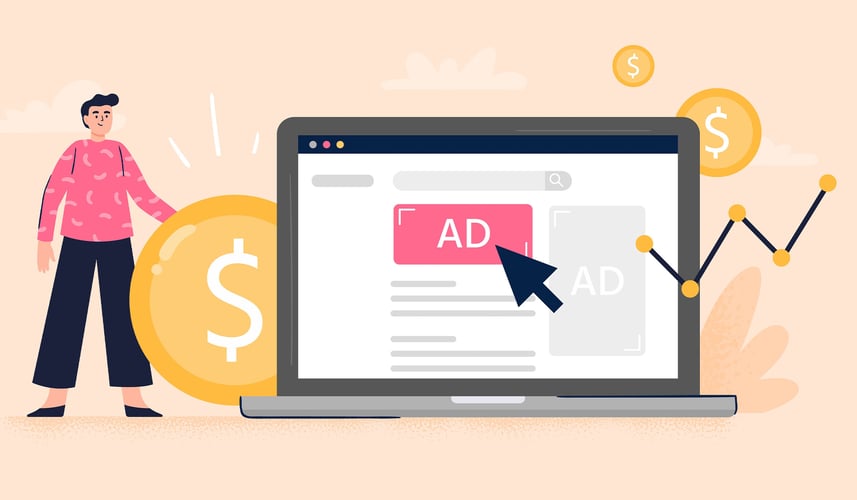Episode 54 - Traditional vs. Digital Ads: Which is Really Better for Financial Institutions


Don't Miss An Episode, Subscribe Now

In a detailed discussion, Meredith Olmstead, CEO of FI GROW Solutions, and Nida Ajaz, VP of Marketing, explore the complexities and strategies involved in combining traditional and digital advertising for banks and credit unions, emphasizing the need for clear messaging and budget balance.
Key Takeaways:
-
Importance of Messaging: When it comes to ad placement, special attention should be given to the messaging. Whether it's traditional or digital advertising, the call to action (CTA) needs to be crystal clear. The messaging should align with the campaign’s overall goal, whether it's promoting a new product or creating brand awareness.
-
Synergy Between Traditional and Digital: Both traditional and digital ad placements have their own unique benefits, and neither should be entirely sacrificed for the other. Brands should aim for a cohesive strategy that uses both types to optimize reach and results. For example, SEO-optimized landing pages and digital ads can reinforce and track the effectiveness of traditional ads.
-
Budgeting & Tracking: It's crucial to balance the budget between traditional and digital ads. Traditional ad placements are usually more expensive and less directly trackable, so they may be more effective as short, concentrated campaigns that allow for 'lift' measurement. On the other hand, digital campaigns should be run continuously to maintain visibility and search ranking.
Transcription:
If you're looking for best practices for your bank or credit union, join us while we talk all things sales, marketing, and strategy for financial institutions. Let's make it happen with FI GROW Solutions.
Hi, there. I'm Meredith Olmstead, CEO and founder of FI GROW Solutions. We are a marketing agency. We work exclusively with banks and credit unions. I am here with our VP of marketing. Really, she just runs all of our client services for us. Nida Ajaz. Nida, say hi.
Hi, everyone.
Nida and I were just having a really great conversation about different kinds of paid marketing and paid ads. Specifically, we were really talking about the distinction between digital ads to work and to support campaigns and efforts of banks and credit unions on the marketing and sales side of things. We're also talking about traditional and traditional ad placements: billboards, radio, TV, even print advertisement. Believe it or not, that's still a thing.
Nida and I were talking about the benefits of both of these and how, really, one is not dead. We see a lot of people starting to shift their budgets. But there really is a place for both of these still in marketing approaches and strategies. I said, "You know what, Nida? Let's hit record and talk about this a little bit more."
The reason we got into this is 'cause we have a number of clients who are trying to figure out budget approaches for traditional plus digital ads: trying to understand where should they be spending their money, how should they be dividing it up, and what's going to be most effective for them over time. Nida was like, "Well, there's a few things that you really need to consider when you're doing this." That, a lot of times, she sees clients dropping the ball. They're not really sure exactly what they need to be doing. Nida, talk to us about the first thing you were talking about. Messaging. What does that have to do with traditional?
Yeah. It's really interesting. When you're planning out the budget, you're spending a lot more time devising what's going to go on. But a lot of times, I've seen, especially in financial institutions, where you've spent a huge amount of money for this ad placement, but the messaging that you were putting out there, there was not actual thought put into what is going to be the CTA, what are you going to top it, what is the goal of this whole placement. I know, a lot of times, it's brand awareness. But there are certain ways that you can tie in digital channels to learn or actually bring some results that can impact your traditional and digital merging together.
First thing is to focus on the messaging. Really, understand what are you going to drive through. Is it talking about a new product that you're releasing? Is it the removal of fees from a certain product? Is it a certain rate or no payments? Whatever that you're trying to focus on for that, make sure that you have a very clear message and then a clear call to action.
I've actually seen too... Sorry. I didn't mean to cut you off. But I've actually seen, too, traditional ads that are put together based on short little snippets of testimonials, which is amazing. At a credit union, you could get your members to be talking about their experience going through the process of applying for a loan or opening a new account or whatever. But it is important that whatever they're talking about, that the product they're talking about ties in with the call to action that you're referencing in the ad. You want to make sure it's super clear. Hey, if they're talking about a business account experience, it needs to be promoting your commercial lending or your business accounts, versus if they just closed on a mortgage, then you want it to be tied into a mortgage promotion of some kind, even though both sometimes can overlap. If you have a primary financial institution, you might do lots of different banking with them, but making sure that those testimonials relate to whatever you're trying to get people to do.
Yeah. Exactly. But at the same time, for the call to action, what I was saying is that basically, at the end of the ad or at the beginning, when someone is... We're in a world where, if you're watching TV, you have an iPad or a phone next to you. As I'm listening or as an ad comes through, if you don't skip it from the TV ads, it's one of those things where you could be on your phone and really quickly pull them up. You do want to show up from a digital perspective, having an SEO-optimized website, having digital ads running, so this person, who's trying to look you up real quick, you're retargeting them to get to ads. I feel like there is a combination that works for the benefit of the consumer that a lot of financial institutions can really tap into.
The other thing is, too... Traditional placements are much harder to track. We're going to talk about that more in just a sec. But when and if you can, radio spots, these kinds of ads you're talking about, maybe on streaming networks or wherever, try to create a special landing page or some path that is trackable for results. Make it your institution/one word to put into the URL to make it super easy for that person to get to that landing page. It's connected to the campaign that you just paid $50,000 to run for eight weeks. Why would you not want to be able to directly track the traffic that you might be driving? Absolutely important.
Then, you connect the dots between the traditional experience with your brand and then the digital experience with your brand because, really, the two have to work hand in hand in order to close a new account, for sure, or have a new customer/bring a new customer in. The last thing I think that we were talking about, and this gets a little complicated, is budgeting because people will say, "Well, so how much should I spend? How should I divide my budget between traditional and digital?" What are some of the factors that just pop into your mind first off when you're thinking about that?
Yeah. I think for budgeting, it's very important for anyone who's trying to do this is, first of all, not to let go of one or the other. If traditional works, there's certain... There's a lot of variety of traditional channels. What works in your market definitely makes sense to keep it around. It's not to do away. Same thing with digital. You shouldn't be doing away with digital as well 'cause now that is the way to go. As far as reaching and targeting and with the short-term memory of people with all the social media and things like that, having the brand on the forefront definitely makes sense both ways, traditional or online.
Yeah. The way that we have thought this through for some clients is that the most effective way of seeing the benefits of traditional placements that aren't directly call-to-action, digitally, you can't track them from one to two kind of thing, is lift over time and sometimes year over year. For example, say you wanted to really focus on a fall auto buying campaign because you wanted to get into the market with people right before the holidays around auto loans. You want to compare that with an auto loan campaign that you ran last fall. You would want to look at the lift over time when you're running that campaign. That's the best way to see if radio ads are having an effect, if TV streaming ads are having an effect, billboards, all that kind of thing.
The issue with that is if you're in traditional placements nonstop for 12 months in a row, it's really, really hard to show... "Okay, I ran this campaign for September and two weeks in October. Now, let's see what the lift is for that campaign." If you're nonstop in traditional, it's hard to see lift in that way. Generally, what we'll recommend to people is, "Hey, let's focus your budget/concentrate your budget in a few key campaigns throughout the year for traditional placements. Then, you can really easily see general lift year over year if those campaigns made an impact over the last time you ran a similar campaign." However, with digital, we tell people, "You really need to stay in market pretty much nonstop." Why do we tell people that?
There are a couple of different reasons why. First of all, campaigns on digital... You have to run them continuously because you want to optimize for digital. It does take the campaigns to pick up steam for a couple of weeks before it actually starts bringing in results. Then, every time you rebuild it, it will have that learning phase. You need to have it. Once you've gone through the learning phase. Keep it ongoing. Yes, keep switching up the campaigns so the messaging is quarterly or bi-yearly. Switching up the messages makes sense. But you have to be on the market continuously, especially for search. You don't want to be out of the market, or you don't want your competitors to show up when someone is searching in your local market for that product. You want to be ranking regardless of whether you're in the market or not. You're always in the market for all of your products.
Right. Yeah. I think the big thing with budget... It's really hard for us to give hard numbers or hard percentages for what you should spend where. But what we always say is you should not be sacrificing one completely for the other. It's like if you are spending so much on traditional placements that you can't afford digital ads anymore for the second half of the year or something like that, you need to reevaluate your budget. I mean, it's basically like, "Look, there has to be a balance here."
Traditional ad placements tend to be a lot more expensive, which is why it really makes sense to not do them 12 months in a row. It makes sense to do them almost like quarterly campaigns that might run for six weeks or eight weeks, then take a break, pull out of the market, look for lift, see what you saw, measure your results year over year, and decide what you want to do the next quarter once you've looked at results really clearly because that is hard. It takes a little more time and a little more strategy to really measure and glean results from traditional placements.
Awesome. All right. Well, this was super useful. I'm glad we had this conversation because I know a lot of people... We're getting into budgeting season anyway, coming up in September/October/November timeframe. It's important stuff.
Awesome. Thank you so much, Nida. I appreciate your time. If you all are interested in any other tips around marketing or sales for banks and credit unions, please visit us at figrow.com. We have lots of great episodes, other podcast episodes, and blogs. Otherwise, let's just all get out there and make it happen.







Blog comments